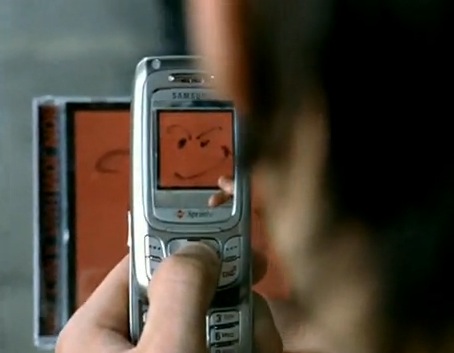I got a Bon Jovi song stuck in my head the other day. The song was “Have a Nice Day,” the title track from the band’s 2005 album. It’s got all the Bon Jovi hallmarks: those familiar power chords, Richie Sambora playing a double-necked guitar and multiple lyrics about “living my life.” All it’s missing is that signature “wah-wah” guitar riff.
But the music video for the song got me thinking about how viral campaigns work. The video starts off with Jon Bon Jovi outside of one of his concerts. A fan hands him a copy of the CD, and the singer grabs a Sharpie and draws this little doodle.
Then the fan pulls out his cell phone, takes a photo of the doodle and sends it to someone. And from there, the subversive smiley face goes viral. It’s plastered on mailboxes and billboards, tattooed onto arms and lower backs, and even cut into a corn field.
But step back a second. Let’s see where this all starts in the video.
It starts with that. With a picture taken on an old-fashioned, non-flip, Sprint cell phone. Not a Blackberry. Not an iPhone. A phone that retails today for less than $20.
Let’s put this Bon Jovi video campaign in perspective. The song came out in August 2005. The iPhone wouldn’t be released until June 2007. Twitter wouldn’t launch for another year, and wouldn’t gain popularity for another three years. Facebook was still limited to college students only, and those with accounts could only post one photo — their profile photo.
So this within-a-video viral campaign — one from a song that’s only six years old — is almost comically antiquated.
How would Bon Jovi’s smiley face go viral today? Probably like this.
❡❡❡
Bon Jovi draws the image on a fan’s CD. The fan whips out his iPhone and Twitpics it. Then, even though it’s a doodle, he Instagrams the image, because everything looks better in sepia.
The Twitpic gets a little bit of traction at first — a retweet here, a retweet there. Someone mass @-replies the message to celebrities. @kimkardashian makes the image her profile pic.
Soon, the smiley has its own Facebook page — Can this smiley face get more fans than the Jonas Brothers?
Then it gets its own Twitter account — @SubversiveSmiley, along with dozens of impostor accounts. (@FakeSubversiveSmiley, @SubversiveFrowny, @SubversiveSmileyGlobalPR, among others.)
(The Twitter account is later republished in book form, and makes the New York Times best-seller list. The CBS sitcom based on the tweets — “Have a Nice Day” starring John Stamos as a stuck-in-the-80s Jersey dad trying to make good — gets cancelled after the third episode.)
4Chan launches a meme — #icanhazsmiley — and then the Cheezburger Network launches a site devoted to sneaking the smiley face into famous photos “Where’s Waldo” style.
HuffPo publishes a photo gallery of 21 famous smiley faces, and although mostly inane, it draws 11 million page views.
@KanyeWest retweets the initial image with the hashtag #SWAG, and announces his next album will be called “Show Me How to Smiley.”
The image jumps the shark.
Two weeks later, Bon Jovi’s album, “Have a Nice Day,” finally hits iTunes. Fans are confused as to why Bon Jovi’s album is featuring an image that’s so last week.



Ok